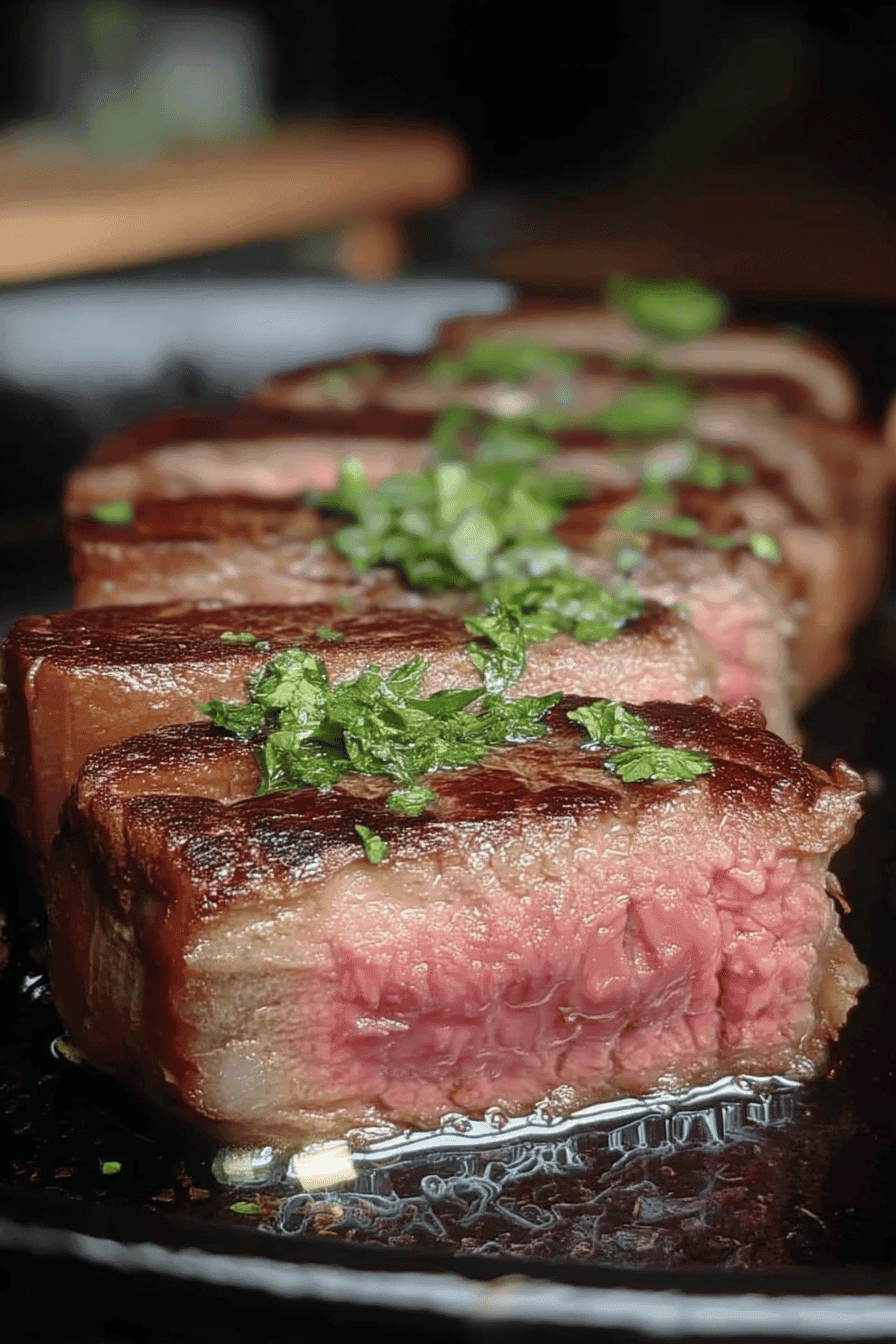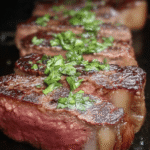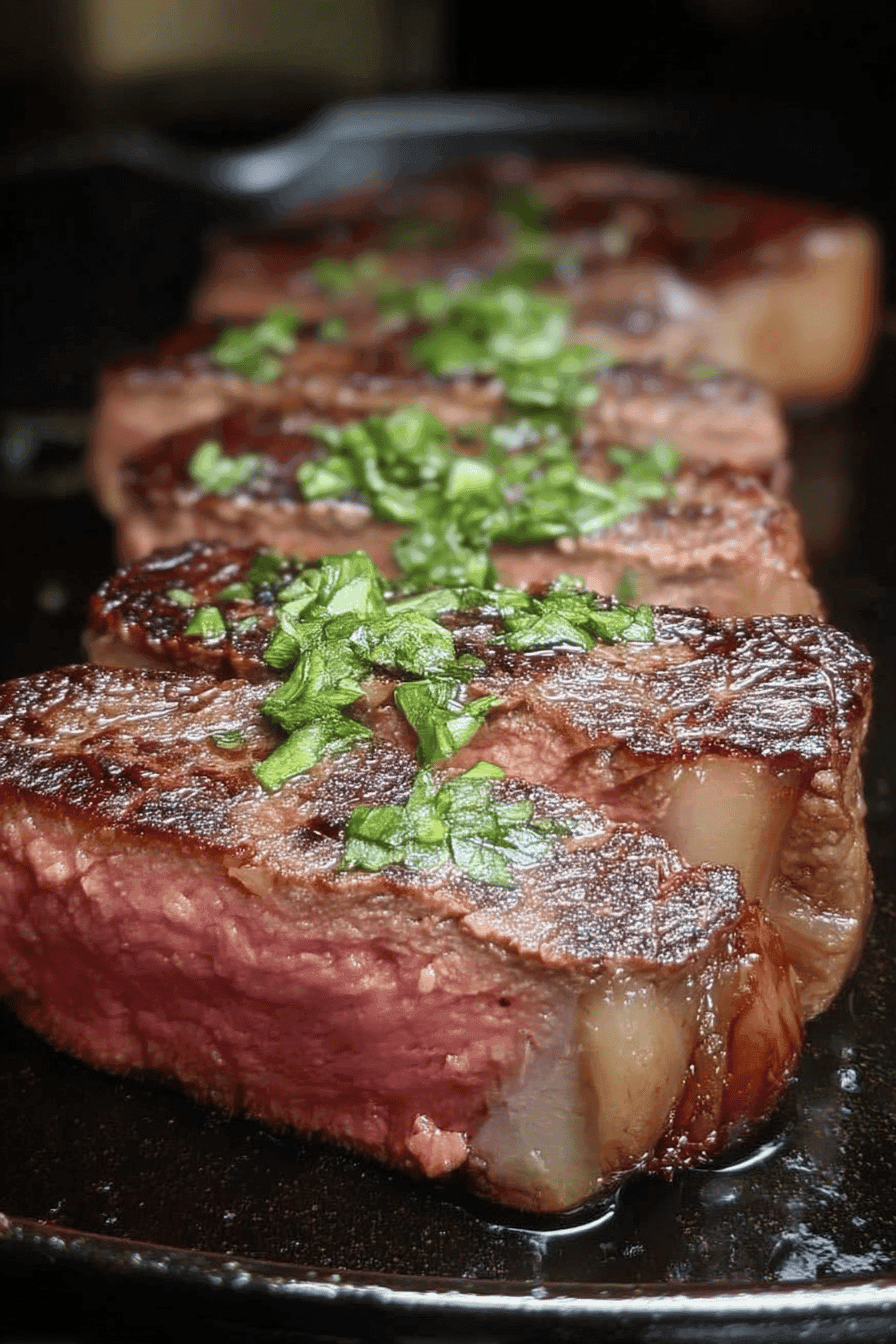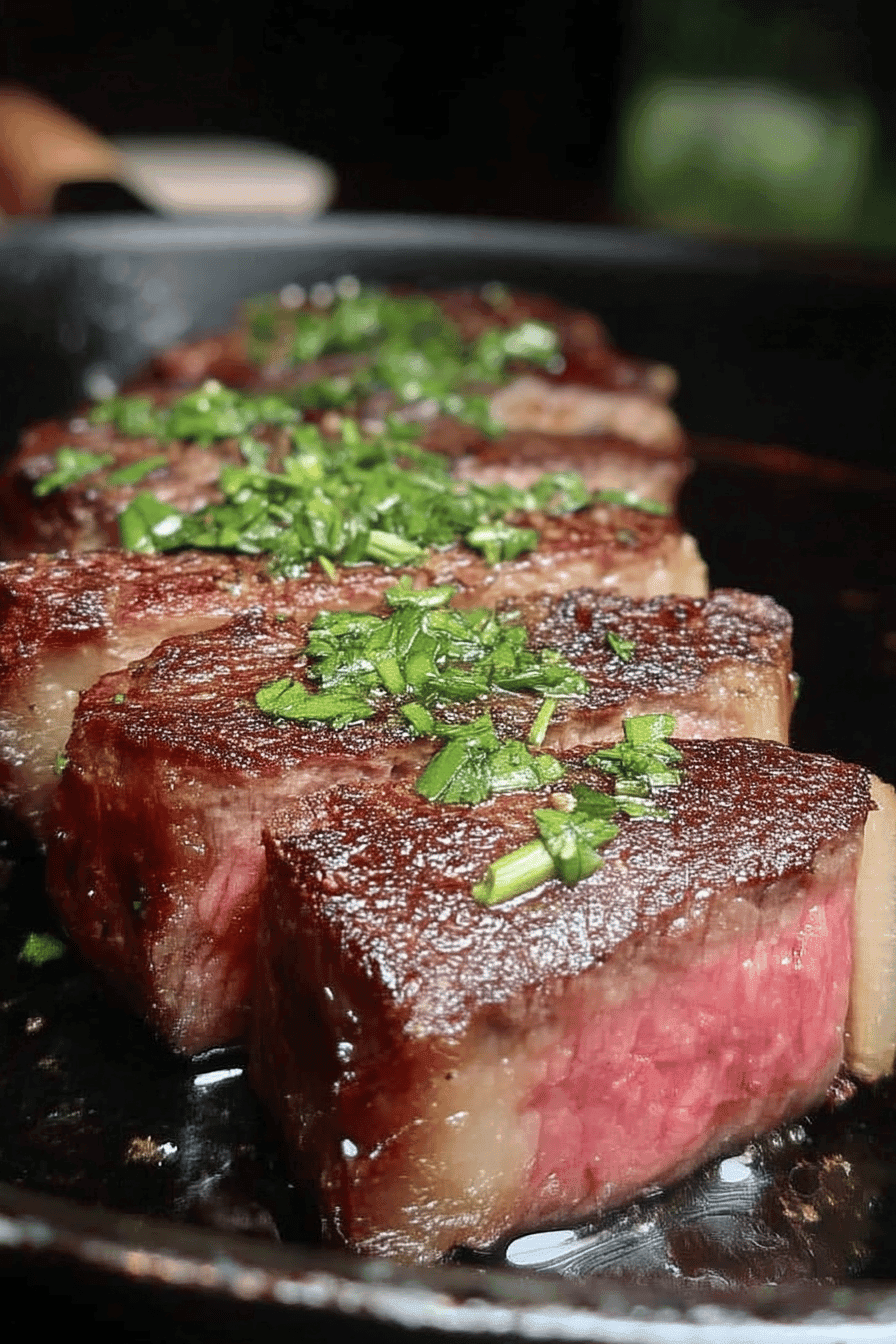Benefits and Advantages of smoked steak
Smoked steak offers a unique combination of flavors and texture that sets it apart from traditional cooking methods. The slow smoking process infuses the meat with a deep, rich smoky aroma while preserving its natural tenderness and juiciness. This technique allows the steak to develop complex flavors without relying on heavy fats or excessive seasoning, making it a healthier choice compared to fried or heavily processed meats.
From a culinary perspective, smoked steak is extremely versatile. It can be made with various thick cuts such as ribeye, New York strip, tenderloin, or sirloin, each bringing its own distinct character to the dish. The long, gentle cooking process enhances the natural umami and creates a beautifully formed crust, especially when combined with dry brining and proper searing.
Health-wise, smoking can reduce the need for adding excess oils or butter, preserving important micronutrients like iron, zinc, and B vitamins that are crucial for overall well-being. The antimicrobial nature of the smoking process can also contribute to food safety. This recipe works well for casual meals or special occasions and accommodates different dietary preferences, making smoked steak a crowd-pleaser in many kitchens.
Smoked beef delivers a tasteful experience with tender, juicy results that bring rich smoky notes to every bite.
Jump To
- 1. Benefits and Advantages of smoked steak
- 2. Essential Ingredients for smoked steak
- 3. Dietary Substitutions to Customize Your smoked steak
- 4. How to Prepare the Perfect smoked steak: Step-by-Step Guide
- 5. Advanced Tips and Variations
- 6. How to Store Smoked Steak: Best Practices
- 7. Nutritional Value of Smoked Steak
- 8. FAQs: Frequently Asked Questions About Smoked Steak
- 9. smoked steak
Essential Ingredients for smoked steak
Gather the right ingredients to make flavorful and tender smoked steak:
- 4 steaks, about 1½ inches thick (choose from New York strip, ribeye, tenderloin, sirloin, or T-bone)
- Kosher salt, to taste
- Cracked black pepper, to taste
- Garlic powder or garlic paste (optional; about 1 tablespoon if using)
- Clarified butter, melted (3 tablespoons, optional for finishing and extra richness)
- High smoke point oil, such as avocado oil, for searing
- Wood chips or pellets (fruitwoods like cherry or apple for mild smoke; hickory, mesquite, or oak for bold flavor)
| Ingredient | Quantity | Purpose |
|---|---|---|
| Steak cuts | 4 pieces, ~1½ inches thick | Core protein, ensures juicy texture and smokable thickness |
| Kosher salt & cracked black pepper | To taste | Seasoning to enhance natural flavors and crust formation |
| Garlic powder or paste | 1 tablespoon (optional) | Adds flavor depth |
| Clarified butter | 3 tablespoons (optional) | For rich finishing glaze |
| High smoke point oil | For searing | Prevents sticking, develops crust during finish |
| Wood chips or pellets | As needed | Imparts distinctive smoke flavor |
Dietary Substitutions to Customize Your smoked steak
Smoking isn’t just for beef; this cooking style adapts well to a variety of dietary needs with proper substitutions:
Vegetarian and Vegan Alternatives
- Replace beef with smoked marinated tofu, tempeh, or large portobello mushrooms that absorb smoky flavors beautifully.
- Use plant-based oils for searing and avoid animal butter to keep dishes fully vegan.
Gluten-Free Considerations
- Ensure all spice blends and seasoning rubs are gluten-free, avoiding any hidden gluten in commercial sauces or marinades.
- Use simple seasoning of kosher salt and pepper to guarantee gluten-free compliance.
Low-Calorie Options
- Choose lean cuts like sirloin or flank steak to reduce fat and calorie content without sacrificing protein.
- Consider plant-based smoked protein slices or jackfruit for lower-calorie, flavorful meals.
Tailoring your smoked steak cooking to fit dietary needs ensures everyone can enjoy this smoky, juicy delight.
How to Prepare the Perfect smoked steak: Step-by-Step Guide
Use this detailed method for a flavorful and juicy smoked steak every time.
- Choose thick steak cuts. Select steaks about 1½ inches thick such as ribeye, sirloin, or New York strip. Pat dry with paper towels to promote crust formation.
- Oil and season. Lightly coat each steak with olive or avocado oil for moisture and spice adhesion. Season generously with kosher salt, cracked black pepper, and optionally garlic powder or paste.
- Dry brine. For best flavor, let the steaks rest seasoned in the refrigerator for at least 40 minutes or overnight to develop a savory crust.
- Preheat smoker. Set the smoker to 225°F to 250°F (107°C to 121°C). Choose wood chips like fruitwood for mild smoke or hickory, mesquite, oak for bold flavors.
- Smoke the steaks. Place steaks directly on smoker grates. Smoke until the internal temperature reaches about 10°F below final target:
- Rare: 115°F (46°C)
- Medium Rare: 125°F (52°C)
- Medium: 135°F (57°C)
- Medium Well: 145°F (63°C)
- Well Done: 155°F (68°C)
- Rest and dry. Remove steaks, pat dry to ensure good sear, and rest for 10–15 minutes.
- Sear for crust. Heat a cast iron skillet or grill to high. Lightly oil with high smoke point oil. Sear steaks 2 minutes per side until final internal temps are reached:
- Rare: 125°F (52°C)
- Medium Rare: 135°F (57°C)
- Medium: 145°F (63°C)
- Medium Well: 155°F (68°C)
- Well Done: 165°F (74°C)
- Finish and rest. Optionally drizzle with melted clarified butter mixed with garlic paste, garnish with parsley. Rest steaks loosely tented for 10 minutes before slicing.
- Serve and enjoy. Slice against the grain and serve with your favorite sides, mindful of dietary preferences for a balanced meal.
Following these steps guarantees a tender, flavorful smoked steak with a beautiful crust and rich smoky aroma. For more recipes perfect for hearty meals, visit our Garlic Chicken recipe page.
Advanced Tips and Variations
Mastering the perfect smoked steak involves a few advanced techniques and creative twists that bring out the best flavors and textures. Here are some expert tips:
Dry Brining for Deep Flavor
Salt your steaks generously at least 40 minutes before smoking, or preferably the night before. This dry brining process helps the salt penetrate the meat, improving moisture retention and developing a savory crust.
Choose Your Wood Wisely
Different woods lend different smoke profiles. Fruitwoods like cherry or apple add mild, sweet notes, while hickory, mesquite, or oak provide robust, bold flavors. Experiment with blends to find your personal favorite.
Spice It Up
Add heat with cayenne pepper or chipotle powder to your seasoning rub. For a unique smoky twist, try a coffee-based dry rub, which adds an earthy depth that pairs well with beef.
Searing for Crust
After smoking, finish your steak with a quick sear in a scorching hot cast iron skillet or grill. This step caramelizes surface proteins, creating a flavorful crust that contrasts beautifully with the tender, smoky interior.
Marinades and Toppings
Marinate your steaks in a blend of soy sauce, maple syrup, and garlic prior to smoking for a sweet and savory flavor. Alternatively, serve the sliced steak topped with chimichurri for a fresh, herbaceous punch.
Vegan and Plant-Based Variations
Smoke tofu, tempeh, or portobello mushrooms seasoned similarly with salt, pepper, and smoked spices. These alternatives soak up smoke flavor beautifully and make excellent plant-based dishes.
Combining these tips ensures every smoked steak is tender, flavorful, and perfectly cooked, while offering exciting customization options.
How to Store Smoked Steak: Best Practices
Proper storage of smoked steak is essential for retaining its flavor, texture, and safety.
Refrigeration
- Allow your steak to cool to room temperature but refrigerate it within two hours after cooking.
- Place the steak in an airtight container or wrap tightly with plastic wrap to retain moisture.
- Store in the refrigerator for up to 4 days without significant loss of quality.
Freezing
- For longer storage, wrap steaks tightly in plastic wrap followed by foil or a freezer-safe bag to prevent freezer burn.
- Frozen smoked steak can last up to 3 months.
- Label packages with the date for easy tracking.
Reheating Tips
- Reheat on low heat or in a 250°F (121°C) oven to gently warm the steak without drying it out.
- Add a splash of beef broth or water before reheating to maintain juiciness.
- Avoid high heat reheating methods like microwave to prevent toughness.
Plant-based smoked alternatives like tofu or tempeh should be stored similarly but consumed within 3 to 4 days due to higher perishability.
Nutritional Value of Smoked Steak
A typical 3-ounce serving of smoked steak delivers a nutrient-rich profile conducive to a balanced diet:
| Nutrient | Approximate Amount per Serving | Notes |
|---|---|---|
| Calories | 200-250 kcal | Varies with cut and fat content |
| Protein | 15-20 grams | High quality complete protein |
| Fat | 10-15 grams | Includes both saturated and unsaturated fats |
| Iron | Moderate amount | Essential for oxygen transport |
| Zinc | Present in good amounts | Supports immune function |
| Vitamin B12 | Significant | Important for energy and nerve health |
Smoked steak holds nutritional advantages over fried or processed meats by preserving protein quality and reducing added fats. Lean cuts like flank or sirloin offer lower calorie options while maintaining protein content. For plant-based diets, smoked tofu or tempeh provide comparable protein with less saturated fat, appealing for diverse nutritional goals.

FAQs: Frequently Asked Questions About Smoked Steak
Can you smoke any cut of steak, and which cuts work best?
While you can smoke most steak cuts, thicker cuts around 1½ inches or more smoke best. Popular options include ribeye, strip steak, tenderloin, and top sirloin. These cuts develop a rich smoky flavor and retain juiciness during low-and-slow cooking. Thin steaks cook too quickly and won’t absorb much smoke, so they’re less ideal for smoking.
What temperature should I set my smoker at to smoke steak?
Set your smoker between 200°F and 250°F for smoking steak. This range allows the meat to cook slowly, absorbing smoke flavor without drying out. Monitor the internal temperature of the steak using a meat thermometer and remove it when it reaches about 10°F below your target doneness, then finish by searing to create a crust.
Which types of wood are best for adding flavor when smoking steak?
Hardwood varieties like hickory, mesquite, oak, cherry, apple, and pecan are popular for smoking steak. Milder woods like cherry or maple add subtle sweetness and color, while mesquite and hickory provide a stronger, bolder smoke flavor. Choose wood based on your taste preference and avoid resinous woods that can give off unpleasant flavors.
How long does it take to smoke a steak, and how do I know when it’s done?
Smoking a 1 to 1½-inch thick steak generally takes about 1 hour at 225°F to 250°F, but this varies based on thickness and smoker consistency. Use a meat thermometer to check doneness: 115°F for rare, 125°F medium-rare, 135°F medium, and 145°F medium-well. After smoking, sear the steak quickly over high heat and let it rest before serving.
Why is resting steak important after smoking, and how long should I rest it?
Resting steak for 5 to 10 minutes after smoking allows juices to redistribute within the meat, making it tender and juicy instead of drying out when cut. During this time, the internal temperature also increases slightly, reaching the final doneness level. Cover the steak loosely with foil to keep it warm while resting.

smoked steak
- Total Time: 1 hour 15 minutes to 1 hour 45 minutes
- Yield: 4 servings
- Diet: Omnivore
Description
🥩 Smoked steak offers a juicy, tender meat experience infused with deep, rich smoky flavors.
🔥 Combining slow smoking with high-heat searing creates a flavorful crust and perfect doneness every time.
Ingredients
– 4 steaks, about 1½ inches thick
– Kosher salt, to taste
– Cracked black pepper, to taste
– Garlic powder or garlic paste (optional; about 1 tablespoon if using)
– Clarified butter, melted (3 tablespoons, optional for finishing and extra richness)
– High smoke point oil, such as avocado oil, for searing
– Wood chips or pellets (fruitwoods like cherry or apple for mild smoke; hickory, mesquite, or oak for bold flavor)
Instructions
Choose thick steak cuts. Select steaks about 1½ inches thick such as ribeye, sirloin, or New York strip. Pat dry with paper towels to promote crust formation.
Oil and season. Lightly coat each steak with olive or avocado oil for moisture and spice adhesion. Season generously with kosher salt, cracked black pepper, and optionally garlic powder or paste.
Dry brine. For best flavor, let the steaks rest seasoned in the refrigerator for at least 40 minutes or overnight to develop a savory crust.
Preheat smoker. Set the smoker to 225°F to 250°F (107°C to 121°C). Choose wood chips like fruitwood for mild smoke or hickory, mesquite, oak for bold flavors.
Smoke the steaks. Place steaks directly on smoker grates. Smoke until the internal temperature reaches about 10°F below final target:
- Rare: 115°F (46°C)
- Medium Rare: 125°F (52°C)
- Medium: 135°F (57°C)
- Medium Well: 145°F (63°C)
- Well Done: 155°F (68°C)
Rest and dry. Remove steaks, pat dry to ensure good sear, and rest for 10–15 minutes.
Sear for crust. Heat a cast iron skillet or grill to high. Lightly oil with high smoke point oil. Sear steaks 2 minutes per side until final internal temps are reached:
- Rare: 125°F (52°C)
- Medium Rare: 135°F (52°C)
- Medium: 145°F (63°C)
- Medium Well: 155°F (68°C)
- Well Done: 165°F (74°C)
Finish and rest. Optionally drizzle with melted clarified butter mixed with garlic paste, garnish with parsley. Rest steaks loosely tented for 10 minutes before slicing.
Serve and enjoy. Slice against the grain and serve with your favorite sides, mindful of dietary preferences for a balanced meal.
Notes
🌡️ Use a reliable meat thermometer to monitor doneness and prevent overcooking.
🥩 Choose thick cuts (at least 1½ inches) to retain juiciness and absorb smoke flavor.
🧂 Dry brine steaks for at least 40 minutes or overnight to develop a flavorful crust.
- Prep Time: 10 minutes (plus dry brining time)
- Smoking Time: 1 to 1.5 hours
- Cook Time: 4 to 6 minutes (searing)
- Category: Main Dish
- Method: Smoking and Searing
- Cuisine: American
Nutrition
- Serving Size: 1 steak (about 8 oz)
- Calories: 417-470 kcal
- Sugar: 0 g
- Sodium: 118 mg (variable depending on seasoning)
- Fat: 32-45 g
- Saturated Fat: 14-28 g
- Unsaturated Fat: 8-13 g (estimated)
- Trans Fat: 0 g
- Carbohydrates: 0 g
- Fiber: 0 g
- Protein: 45 g
- Cholesterol: 115-138 mg
Keywords: Smoked Steak, Steak Smoking Times, Perfect Smoked Steak, Steak Cooking Tips



I tried your method for the smoked steak and it turned out amazing! 😍
The smoke flavor was just perfect, and the meat was so tender.
Thank you for sharing such a detailed recipe—it made everything so easy to follow!
★★★★★